Abstract
OBJECTIVE--To observe the effects of introducing an acute pain service to the general surgical wards of a large teaching hospital. DESIGN--A study in seven stages: (1) an audit of current hospital practice succeeded by the sequential introduction to the general surgical wards of (2) pain assessment charts; (3) an algorithm to allow more frequent use of intramuscular analgesia; (4) increased use of local anaesthetic techniques of wound infiltration and nerve blocks; (5) an information sheet for patients about postoperative pain; (6) the introduction of patient controlled analgesia; (7) a repeat audit of hospital practice. Data were collected on each patient 24 hours after operation. SETTING--University Hospital of Wales, which has both district general and tertiary referral functions. PATIENTS--2035 patients over nine months from all surgical specialties (excluding cardiac) at the hospital. General surgical operations were studied in detail and separated into major, intermediate, and minor for data collection. MAIN OUTCOME MEASURES--A change in the median visual analogue pain scores 24 hours after surgery for pain during relaxation, pain on movement, and pain on deep inspiration at each stage of the study. RESULTS--There was a reduction in median visual analogue scores during the study. The median (95% confidence interval) scores for pain during relaxation decreased from 45 (34 to 53) in stage 1 to 16 (10 to 20) in stage 7 for major surgical procedures. Pain on movement decreased from 78 (66 to 80) to 46 (38 to 48), and pain on deep inspiration decreased from 64 (48 to 78) to 36 (31 to 38). The reductions in median scores for intermediate and minor operative procedures showed similar patterns. CONCLUSIONS--The introduction of an acute pain service to the general surgical wards led to considerable improvement in the level of postoperative pain as assessed by visual analogue scores. Simple techniques of regular pain assessment and the more frequent use of intramuscular analgesia as a result of using an algorithm were particularly effective.
Full text
PDF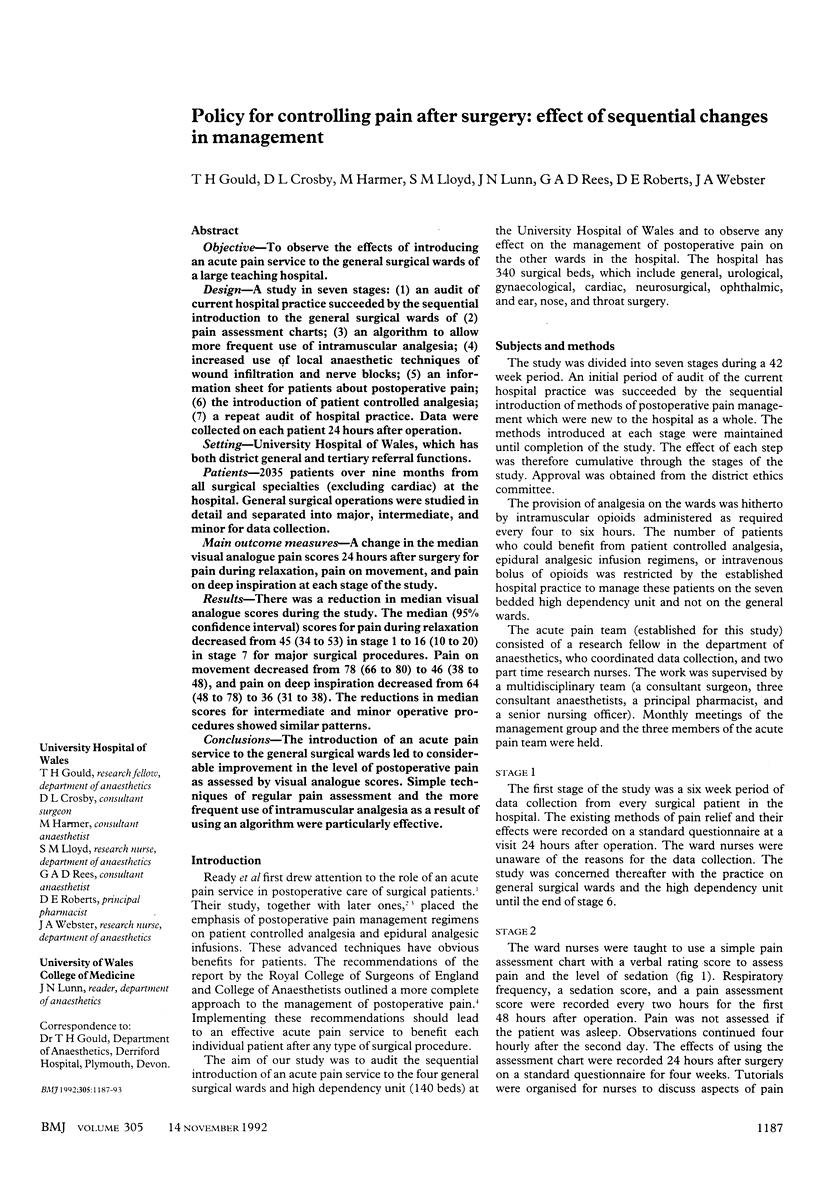
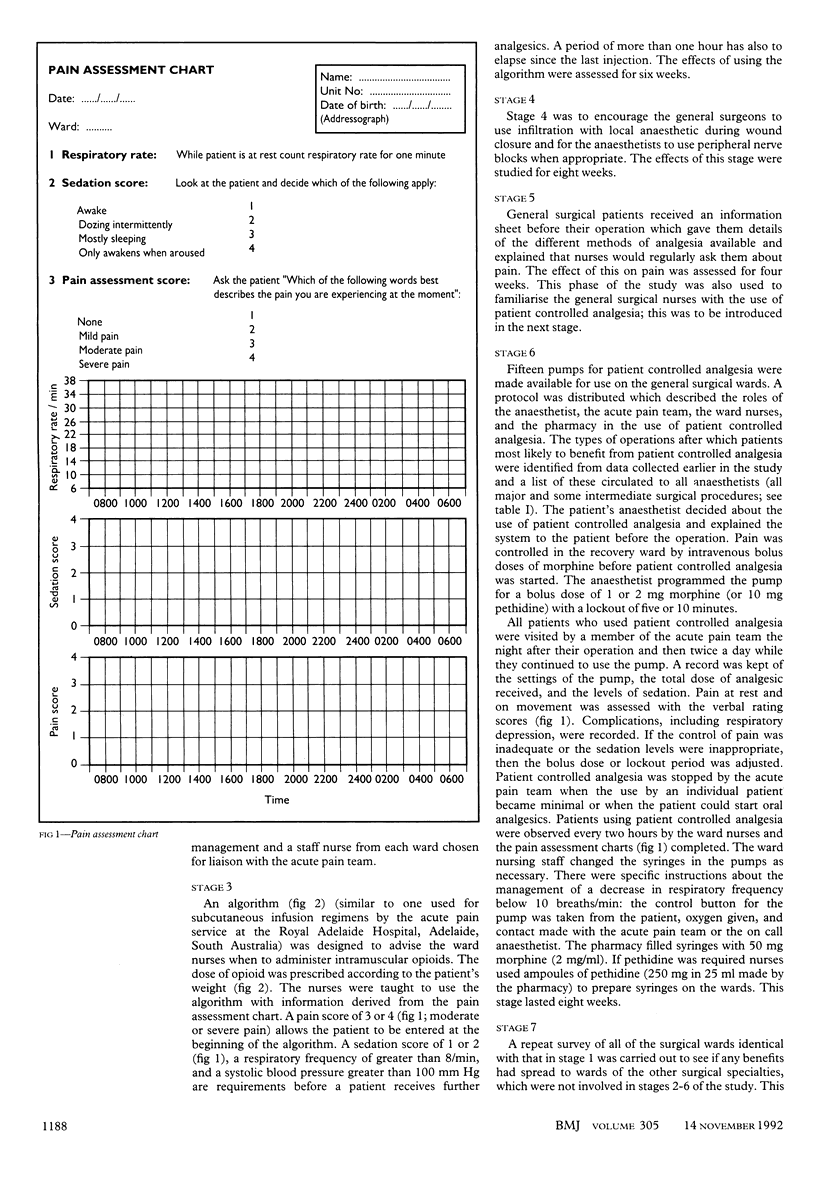
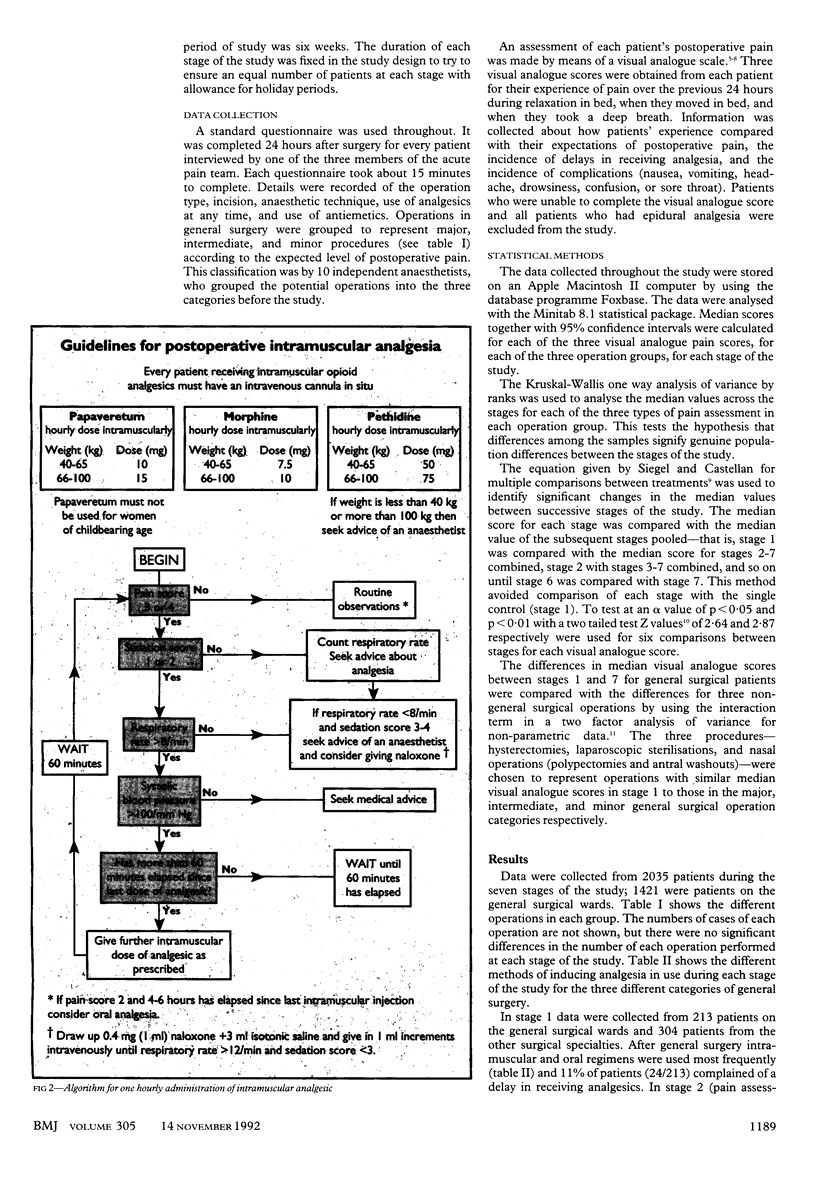
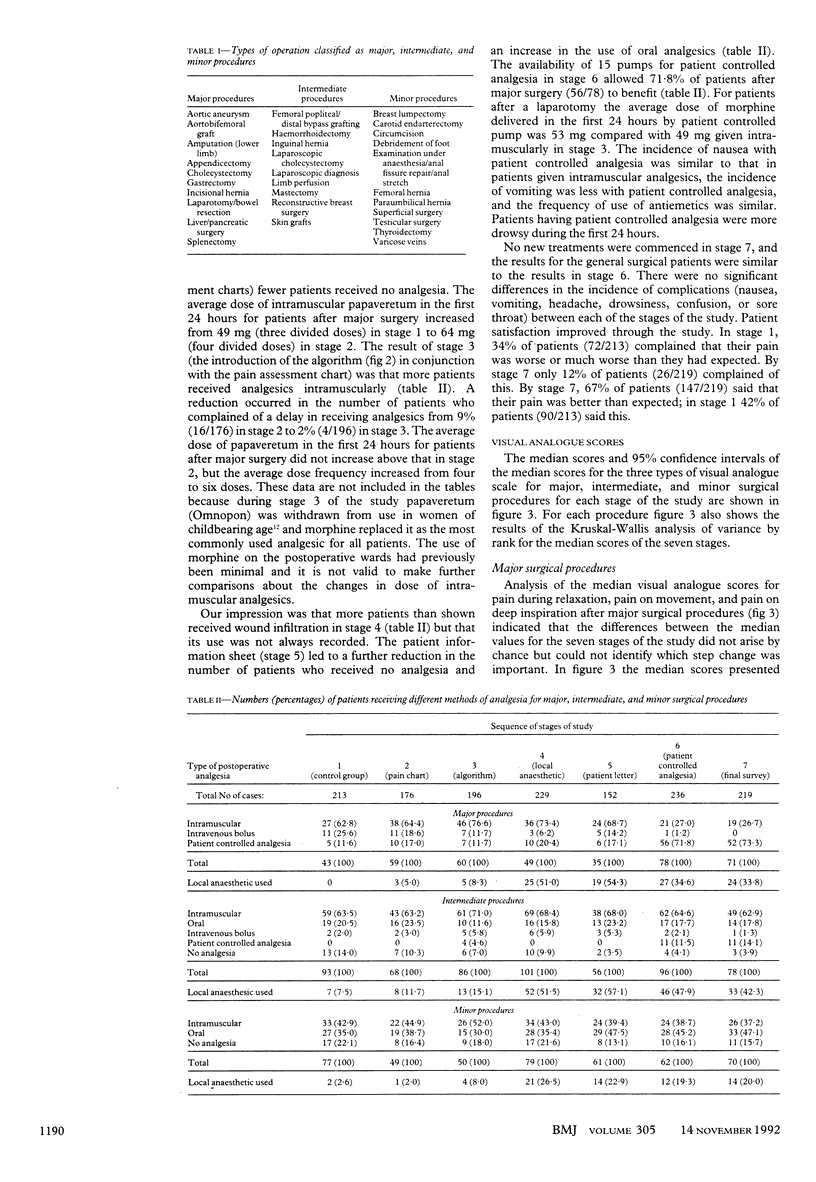
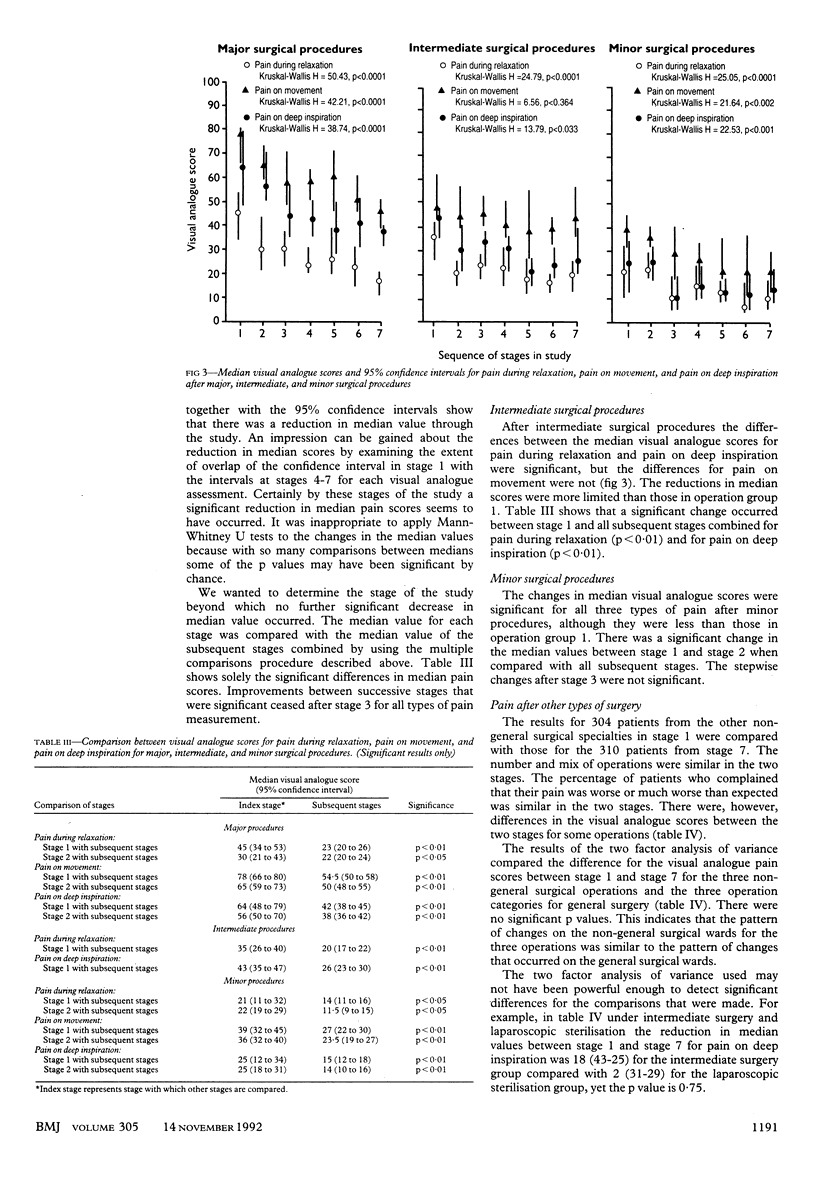

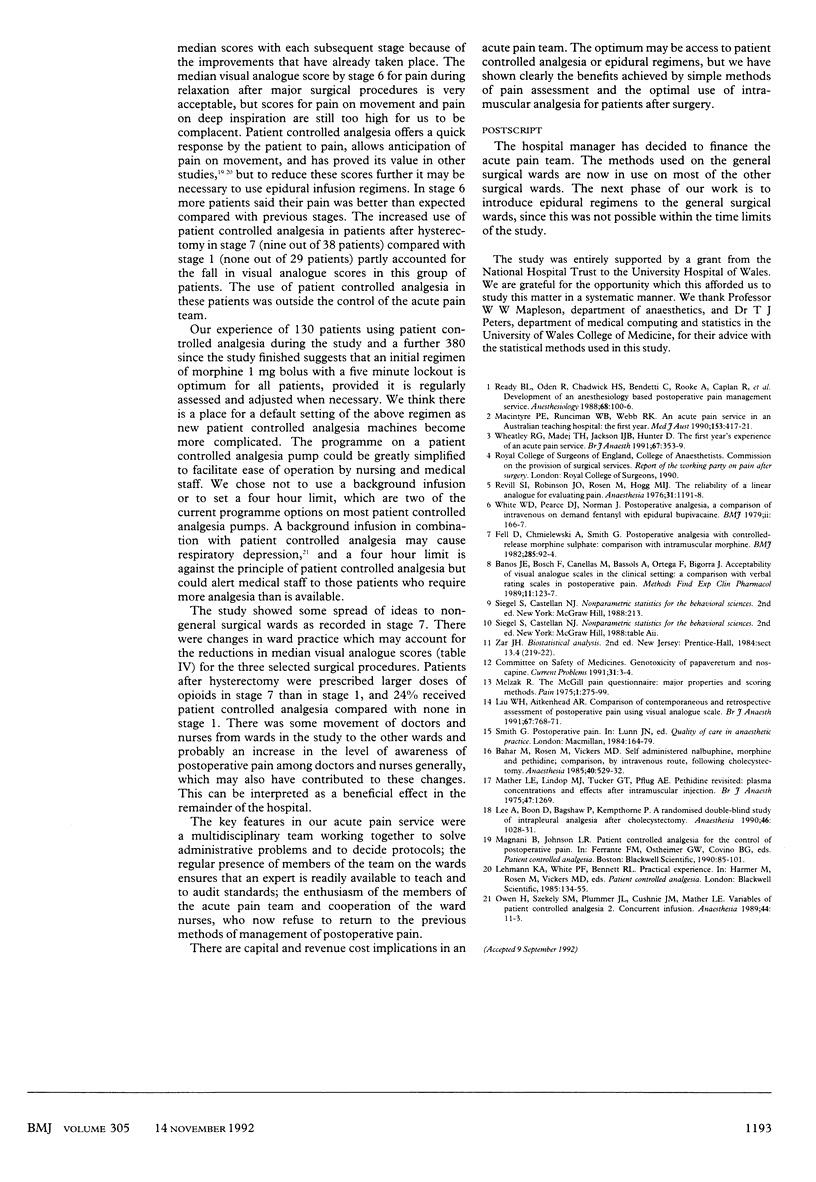
Selected References
These references are in PubMed. This may not be the complete list of references from this article.
- Bahar M., Rosen M., Vickers M. D. Self-administered nalbuphine, morphine and pethidine. Comparison, by intravenous route, following cholecystectomy. Anaesthesia. 1985 Jun;40(6):529–532. [PubMed] [Google Scholar]
- Baños J. E., Bosch F., Cañellas M., Bassols A., Ortega F., Bigorra J. Acceptability of visual analogue scales in the clinical setting: a comparison with verbal rating scales in postoperative pain. Methods Find Exp Clin Pharmacol. 1989 Feb;11(2):123–127. [PubMed] [Google Scholar]
- Lee A., Boon D., Bagshaw P., Kempthorne P. A randomised double-blind study of interpleural analgesia after cholecystectomy. Anaesthesia. 1990 Dec;45(12):1028–1031. doi: 10.1111/j.1365-2044.1990.tb14880.x. [DOI] [PubMed] [Google Scholar]
- Liu W. H., Aitkenhead A. R. Comparison of contemporaneous and retrospective assessment of postoperative pain using the visual analogue scale. Br J Anaesth. 1991 Dec;67(6):768–771. doi: 10.1093/bja/67.6.768. [DOI] [PubMed] [Google Scholar]
- Lunn J. N. Anaesthetists, lawyers and the public. Anaesthesia. 1989 Jan;44(1):1–1. doi: 10.1111/j.1365-2044.1989.tb11085.x. [DOI] [PubMed] [Google Scholar]
- Macintyre P. E., Runciman W. B., Webb R. K. An acute pain service in an Australian teaching hospital: the first year. Med J Aust. 1990 Oct 1;153(7):417–421. doi: 10.5694/j.1326-5377.1990.tb125503.x. [DOI] [PubMed] [Google Scholar]
- Mather L. E., Lindop M. J., Tucker G. T., Pflug A. E. Pethidine revisited: plasma concentrations and effects after intramuscular injection. Br J Anaesth. 1975 Dec;47(12):1269–1275. doi: 10.1093/bja/47.12.1269. [DOI] [PubMed] [Google Scholar]
- Ready L. B., Oden R., Chadwick H. S., Benedetti C., Rooke G. A., Caplan R., Wild L. M. Development of an anesthesiology-based postoperative pain management service. Anesthesiology. 1988 Jan;68(1):100–106. doi: 10.1097/00000542-198801000-00016. [DOI] [PubMed] [Google Scholar]
- Wheatley R. G., Madej T. H., Jackson I. J., Hunter D. The first year's experience of an acute pain service. Br J Anaesth. 1991 Sep;67(3):353–359. doi: 10.1093/bja/67.3.353. [DOI] [PubMed] [Google Scholar]
- White W. D., Pearce D. J., Norman J. Postoperative analgesia: a comparison of intravenous on-demand fentanyl with epidural bupivacaine. Br Med J. 1979 Jul 21;2(6183):166–167. doi: 10.1136/bmj.2.6183.166. [DOI] [PMC free article] [PubMed] [Google Scholar]


